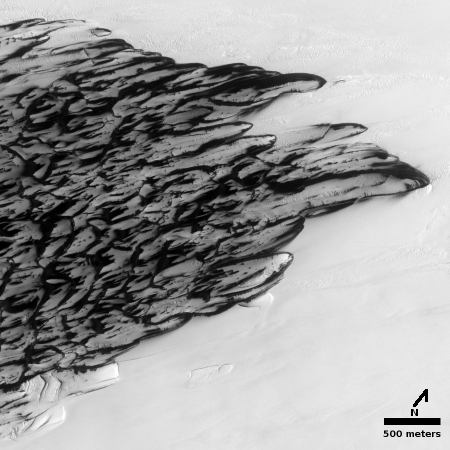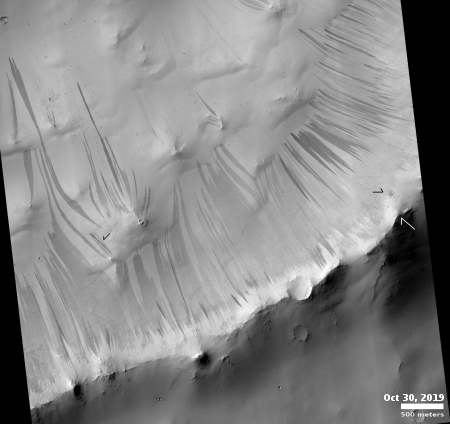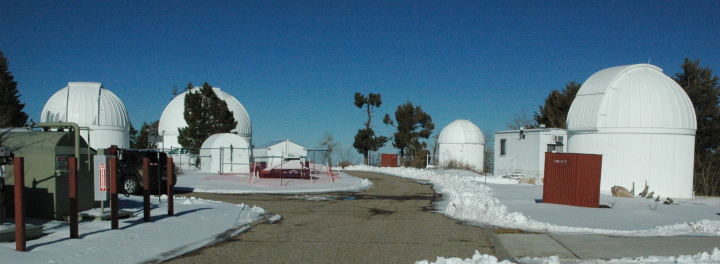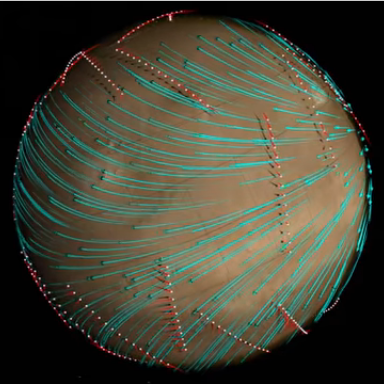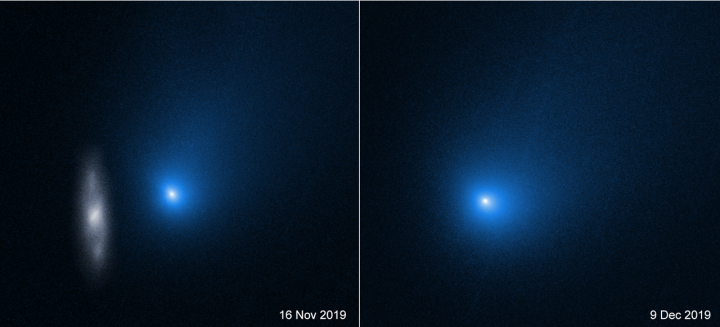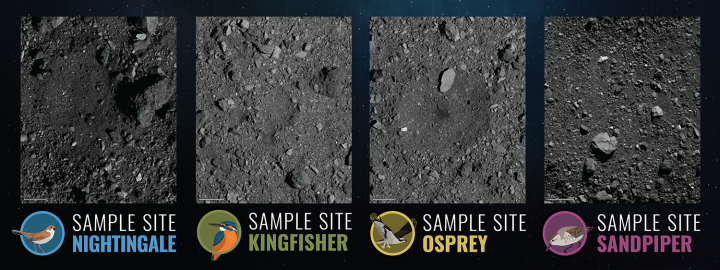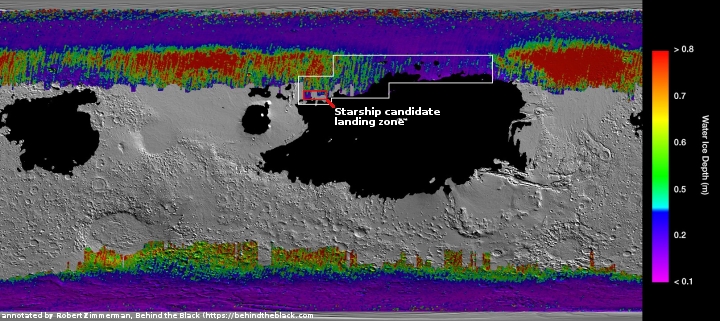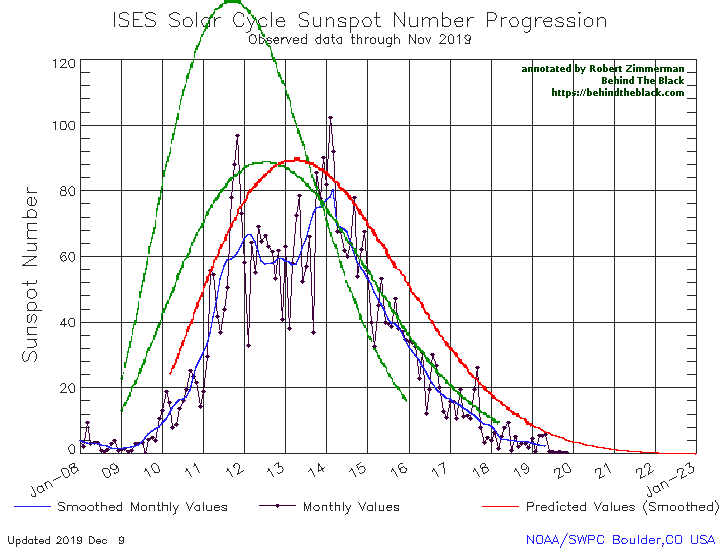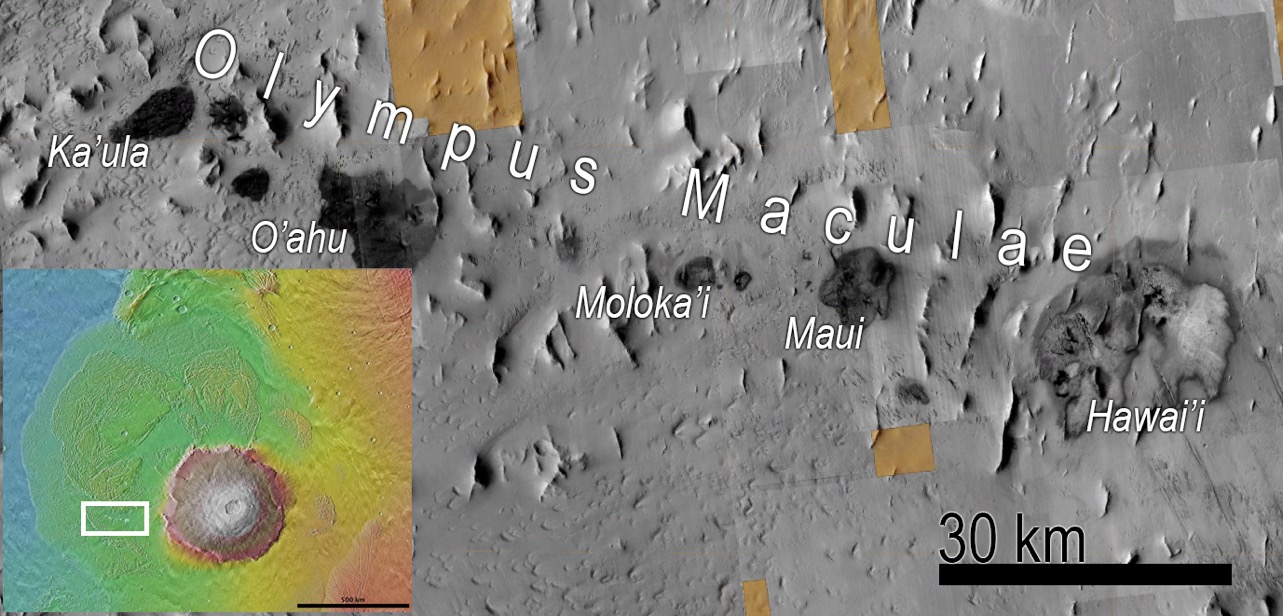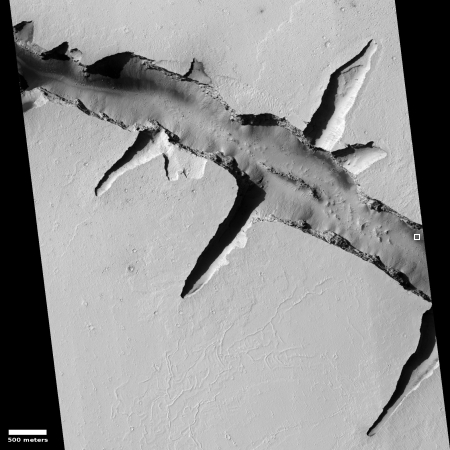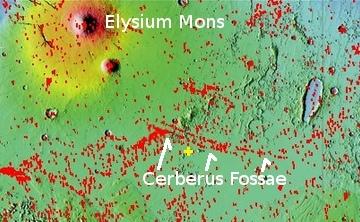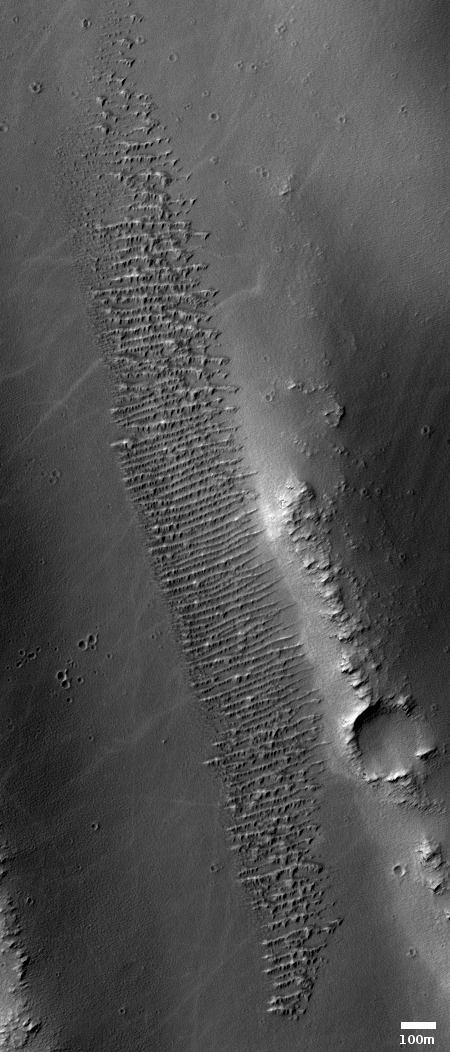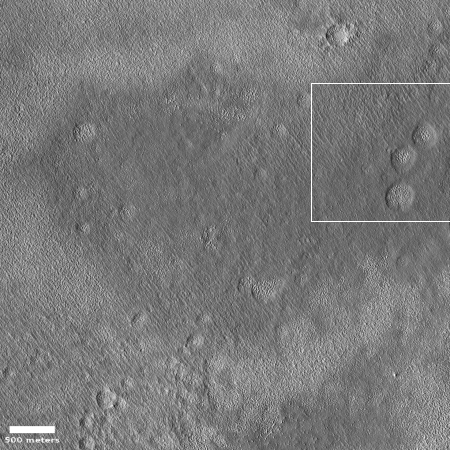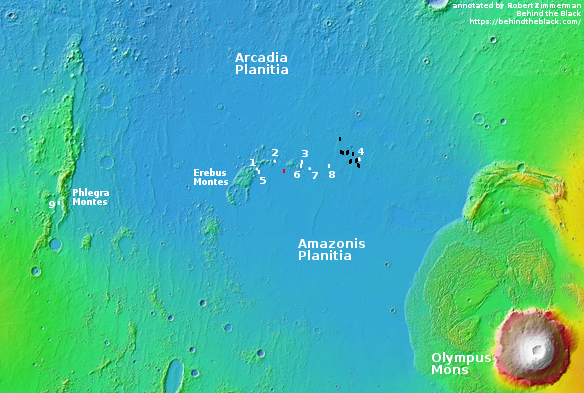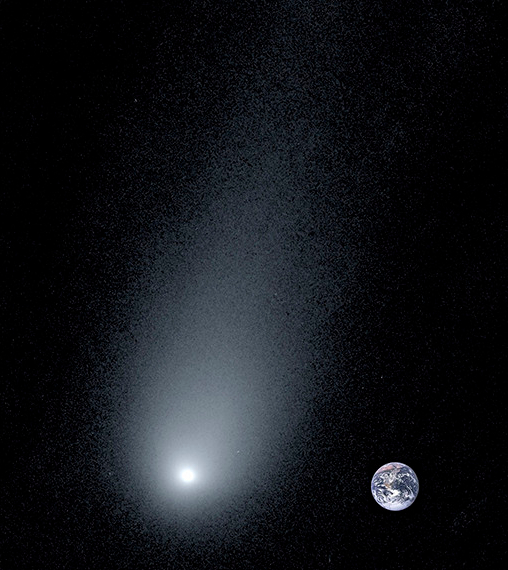Megadunes in the giant canyon of Mars’ north polar icecap
Cool image time! The photo to the right, cropped and reduced to post here, was taken by the high resolution camera of Mars Reconnaissance Orbiter (MRO) on September 15, 2019, right at the beginning of summer at the north polar icecap of Mars.
Without a larger context it is very difficult to figure out what this image shows. The image title, “Seasonal Changes of Chasma Boreale Megadunes,” gives us some basic clues. The streaks of black and dark grey are giant dunes, with this image showing their trailing edge. The darkest streaks are likely places where the thin winter mantle of dry ice has begun to sublimate away with the coming of spring, exposing the darker sand dunes below. The surrounding flat white areas are either the permanent water ice of the icecap or the surface of the lowland northern plains that surround that icecap.
The montage below shows a series of monitoring photos, beginning in 2018 during the last Martian summer and continuing through the start and middle of the spring and ending with the photo above. It shows the seasonal evolution of that upper carbon dioxide dry ice mantle, which reveals the darker dunes below as that dry ice mantle sublimates away.
» Read more
Cool image time! The photo to the right, cropped and reduced to post here, was taken by the high resolution camera of Mars Reconnaissance Orbiter (MRO) on September 15, 2019, right at the beginning of summer at the north polar icecap of Mars.
Without a larger context it is very difficult to figure out what this image shows. The image title, “Seasonal Changes of Chasma Boreale Megadunes,” gives us some basic clues. The streaks of black and dark grey are giant dunes, with this image showing their trailing edge. The darkest streaks are likely places where the thin winter mantle of dry ice has begun to sublimate away with the coming of spring, exposing the darker sand dunes below. The surrounding flat white areas are either the permanent water ice of the icecap or the surface of the lowland northern plains that surround that icecap.
The montage below shows a series of monitoring photos, beginning in 2018 during the last Martian summer and continuing through the start and middle of the spring and ending with the photo above. It shows the seasonal evolution of that upper carbon dioxide dry ice mantle, which reveals the darker dunes below as that dry ice mantle sublimates away.
» Read more

